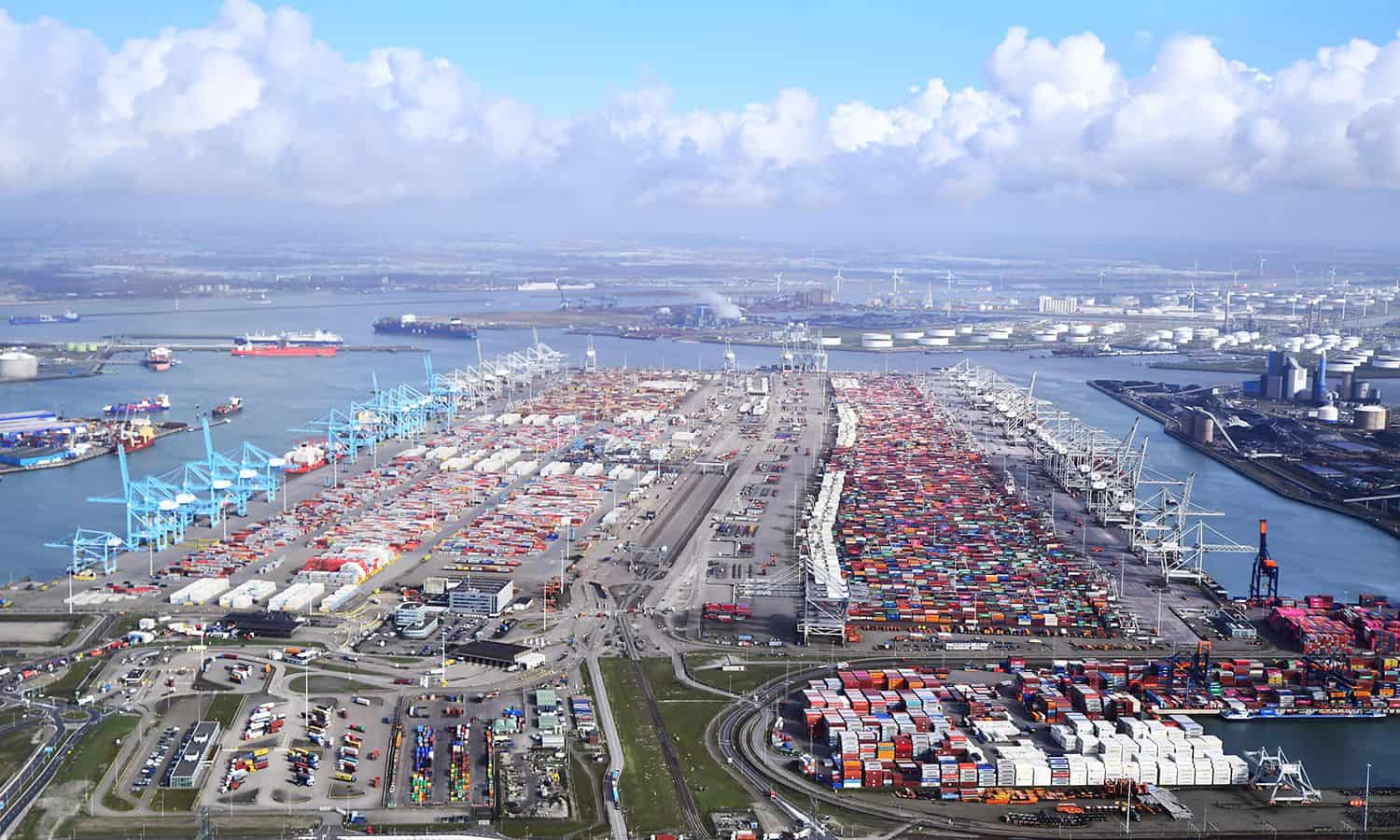Port of Rotterdam’s container volumes fell 1.4% year-on-year to 3.6m teu in Q1 2022 due to uncertainty surrounding the Ukraine-Russia war.
In 2021, 8% of container handling at Rotterdam was Russia-orientated and as the war with Ukraine only began in late February, the impact on throughput volumes in the first quarter was still limited.
Allard Castelein, CEO of Port of Rotterdam Authority, said: “Besides the fact that this conflict is a terrible humanitarian disaster, it led to serious uncertainty in world trade and changes in logistical parameters.
“Although no one can predict how this will unfold, we expect that the developments in Ukraine and the seriously deteriorated relationship between Russia and many other countries will impact throughput volumes for the rest of the year as well.”
A fall in transhipment volumes, which have been decreasing gradually since July 2021, contributed toward the lower container volumes.
The fall can mainly be attributed to the enormous amount of activity at the deep-sea terminals due to the high number of disruptions in the logistics chain.
Several storms in January and February also upset sailing schedules even further.
The impact of the war in Ukraine was reflected in falling volumes to Russia in March as most shipping companies introduced a booking stop for Russian container cargo, and most deep-sea terminals do not export cargo from Russia any longer.
This will affect transhipment volumes to Russia even further and, in the first quarter, the consequences of the COVID lockdowns in Shanghai were not yet noticeable in Rotterdam.
In the Port of Rotterdam in 2021, 62m tonnes of almost 470m tonnes (13%) of throughput was Russia-orientated.
Many energy carriers from Russia are imported via Rotterdam and, last year, roughly 30% of crude oil, 25% of liquefied natural gas (LNG) and 20% of oil products and coal came from Russia.
Russia also exports steel, copper, aluminium and nickel through Rotterdam.
As the war in Ukraine only began in late February, the impact on throughput volumes in the first quarter was still limited.
Meanwhile, the impact of the sanctions and the decisions of individual companies not to do any business with Russia any longer has become noticeable in almost all sectors.
Liquid bulk decreased by 1% to 51.5m tonnes and the volume of crude oil remained virtually unchanged at 25.5m tonnes.
The throughput of mineral oil products, especially fuel oil, however dropped 20.5% to 13.5m tonnes mainly due to lower production in Russia which resulted in less fuel oil entering Rotterdam from Russia.
As from March, oil companies have imported less oil from Russia.
In the first quarter, LNG throughput was considerably higher with a near 78% increase to 2.7m tonnes.
The throughput of chemical products, vegetable oils and renewable products also strongly rose, causing a strong increase in the volume of other liquid bulk (up 22% to 9.9m tonnes).
In the dry bulk segment, iron ore & scrap fell 19.5% to 5.6m tonnes as high energy costs and diminishing demand for steel caused German steel production to slump.
Reduced demand was especially due to disruptions to logistics chains, causing production levels of steel processing companies to drop.
Coal throughput slightly rose by 3.5% to 3.9m tonnes as demand for energy coal increased more sharply than demand for cokes.
For other dry bulk there is a massive increase in comparison with last year, 33.5% to 3.9m tonnes and, despite the high prices, demand for raw materials has soared.
In the breakbulk segment, which includes roll-on roll-off (ro-ro) cargo and other breakbulk, the total throughput increased by 19% to 8.4m tonnes.
Ro-ro throughput was up 20.4% to 6.7m tonnes in comparison with the first quarter of the last year as the Brexit transition period had just ended and due to high demand from the UK.
In the segment of other breakbulk, an increase of near 14% to 1.7m tonnes resulted from a higher non-ferrous throughput and a shift from container cargo to breakbulk, brought on by the rates in container shipping.
Much Russian cargo currently remains in the breakbulk terminals.






